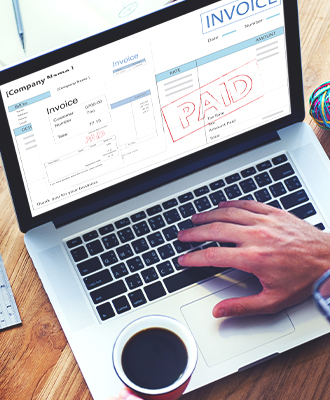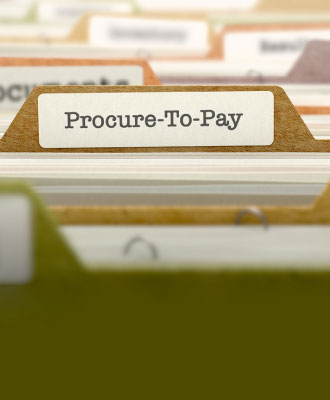A river of money flows in and out of your business every day, and if you’re not managing it effectively, you might find your coffers running dry when it’s time to pay bills, cover surprise expenses, or direct capital into innovation and growth. Cash flow risk is the term used to describe the potential danger of falling short created by your cash flow management practices—the lower your cash flow risk, the better equipped your company will be to use its working capital effectively.
Taking control of your cash flow risk can seem daunting. But by implementing the right best practices, you can optimize your cash flow risk management and rest easy knowing you have the funds you need, when you need them most.
Understanding Cash Flow—and Cash Flow Risk
While it may be confused or conflated with profits by some, cash flow is actually a process, not just a figure on the balance sheet. Cash flow can be positive (more cash is flowing in than out) or negative (more cash is flowing out than in). Negative cash flow presents a much higher financial risk for businesses of all sizes and types, especially since it’s possible for a company to have a negative cash flow while still generating a profit.
That’s why cash flow has its own financial documentation (the cash flow statement) to record all cash flowing in and out of an organization through its financing activities, operations, and investments. The profit and loss statement (also called the income statement), on the other hand, records expenses, total sales, and profits. The two are indeed connected, but profits are not the same as cash; rather, a net loss on the income statement increases cash flow risk, since capital will be diverted to cover the gap between sales and operating costs.
Investors and lenders regard long-term positive cash flow as an indicator of value generation, creditworthiness, and stability. Consequently, managing cost flow risk is crucial to both the immediate financial health and long-term growth of your company.
“Without careful, consistent, and complete cash flow risk management, a company could find itself teetering on the brink of disaster due to a lack of readily available funds.”
Effective Cash Flow Risk Management Matters
A lack of readily available capital can make or break a business—particularly during tough times, such as a recession or a pandemic like the COVID-19 crisis. Cash is used to cover not just short-term debts like vendor invoices and operating costs, but interest payments on long-term financing. Without careful, consistent, and complete cash flow risk management, a company could find itself teetering on the brink of disaster due to a lack of readily available funds.
To understand cash flow risk, it’s important to know a few key terms:
- Cash Flow at Risk (CFaR) is a measure of how changes in market variables can cause future cash flows to fall short of expectations, as well as the extent of those changes by risk factor.
- Value At Risk (VaR): Similar to CFAR. A metric used to measure an investment’s potential loss over a specific time period, generally expressed as the probability of loss exceeding a specific threshold (e.g., $3 million over a given year).
- Liquidity Risk: A measure of how well an organization can cover its short-term financial obligations. Liquidity risk increases when a company lacks the working capital to cover these costs, or has sufficient assets, but cannot readily access them in a timely fashion or without significant financial loss.
A comprehensive cash flow risk management strategy accounts for the many different scenarios in business-critical areas that can affect, and are affected by, cash flow, including:
- Operational Strategy: The standards and practices set for accounts receivable, procurement, and accounts payable will have a pronounced impact on how cash enters and exits a business, and a direct impact on a company’s liquidity risk.
- Market Conditions: The availability of corporate finance options (and the relative ease of corporate financial management) are directly tied to market risk. Small businesses, already hobbled by fewer capital market investment and lending options than their larger brethren, may find themselves struggling to find investments they can readily liquidate to improve cash flow, or long-term investments that provide equity for debt management. This is especially true during a crisis or market downturn/recession. Market conditions have a strong impact on both CFAR and VAR for both your business and your evaluation of other organizations in which you may choose to invest.
- Industry-Specific Risks: A sharp downturn in any industry, whether due to economic disruption, abrupt changes to commodity prices, a loss of customers, etc., can raise expenses and reduce sales, slashing operational cash flows.
- Investment Strategy: While major investments are generally long-term, rather than short-term, expenses, they can absolutely affect cash flow. Interest payments (and their associated interest rates) can consume a sizable chunk of available cash during a given period, depending on your company’s investment strategy. In addition, pouring large amounts of capital into expensive equipment or real estate can raise cash flow at risk by reducing liquidity for the immediate and near future.
- Balancing Short- and Long-Term Debt: Striking the right balance between debt and equity is crucial to keeping cash flow risk to a minimum. Too many short-term debts can create a crisis if they’re called in when cash is low, while long term investments may not be as readily available for small businesses.
Improving Your Cash Flow Risk Management
In tackling a complex process like cash flow management to improve performance, reduce overall risk as well as cash flow at risk and value at risk, and effectively track (and manage) debt capacity, you need a clear plan and the right tools.
Consider making these best practices part of your cash flow risk management strategy:
1. Invest in Automation and AI
Reducing all your financial risks, including cash flow risk, begins with total transparency into, and control over, your company’s financial activity. A comprehensive solution like PurchaseControl gives you access to tools you can use to:
- Perform smart and strategic risk assessment.
- Monitor and optimize your entire procure-to-pay (P2P) process
- Leverage on-demand visibility of all your company’s cash flows (both in and out)
- Integrate your P2P workflows with other accounting software to ensure you have accurate and complete information you need to manage cash flow and reduce risk.
In addition, by centralizing your data management, strengthening your reporting and forecasting capabilities, and incorporating process optimization (including key performance enhancers such as automatic three-way matching of vendor invoices), you’ll be able to implement all the other best practices for cash flow risk management more effectively.
2. Optimize Your Cash Inflow
In good times and bad (but especially in bad), making the most of every incoming dollar is crucial to business continuity and growth. You can gain better visibility into, and control over, incoming cash flows by:
- Offering your customers a variety of payment options. More options increase the likelihood of faster payment.
- Promptly issuing and following up on invoices.
- Providing clear incentives for early payment (including the occasional early payment discount where prudent) and firm consequences (including fees) for late payments.
- Increase your customer base by:
- Developing new goods or services.
- Getting creative with your marketing to reach new markets.
- Developing and implementing a referral program to grow business and reward loyal customers.
- Performing additional cost and market research to determine whether you can, and should, be charging higher prices for goods and services.
- Selling your unpaid invoices in order to generate cash immediately (i.e., invoice factoring). The purchaser takes a small fee off the top and then collects the payment from the original customer.
- Strategically leveraging small business loans to fund expansions, purchase new equipment, cover unexpected costs (or mitigate seasonal shortages), and invest in research and development.
3. Optimize Your Outgoing Cash Flows
Chances are, your management team wants the biggest possible return on investment (ROI) for every dollar you spend, along with healthy levels of liquidity, VAR and CFAR. You can make it happen by:
- Reviewing and eliminating any unnecessary expenses.
- Making strategic upgrades to equipment and technology. The immediate costs will be readily offset by long-term value in the form of greater production capacity and efficiency, as well as lower maintenance and labor costs that free up more cash.
- Optimizing your workflows to reduce cycle times for both purchase orders and invoices.
- Using a comprehensive P2P solution can make this much easier, and provide a foundation for a larger digital transformation and business process optimization
- Automation and data management create a closed buying environment that lowers costs and increases value by eliminating rogue spend and invoice fraud.
- Capturing more discounts from vendors through early payments.
- Taking strategic advantage of extended payment terms when you need more cash.
- Negotiating the best possible payment terms with vendors through contract negotiation and supplier relationship management (strategic partnerships, e.g.).
- Transferring some short-term debt to long-term debt through financing or the use of corporate credit cards.
Keep Your Cash Flowing and Your Business Thriving
Is your company’s cash flow a healthy torrent you can tap on demand, or an unpredictable deluge that suddenly becomes a trickle when you need it most? Invest in the tools and techniques you need for effective cash risk management, and you’ll have a firm grasp on your company’s working capital, visibility into and control over cash payments, and stronger resistance to cash flow volatility that can hurt not only your operational agility, but your credit rating and perceived value generation for investors and lenders.
Reduce Cash Flow Risk, Optimize Workflows, and Streamline Your Entire P2P Process with PurchaseControl
Find Out How








